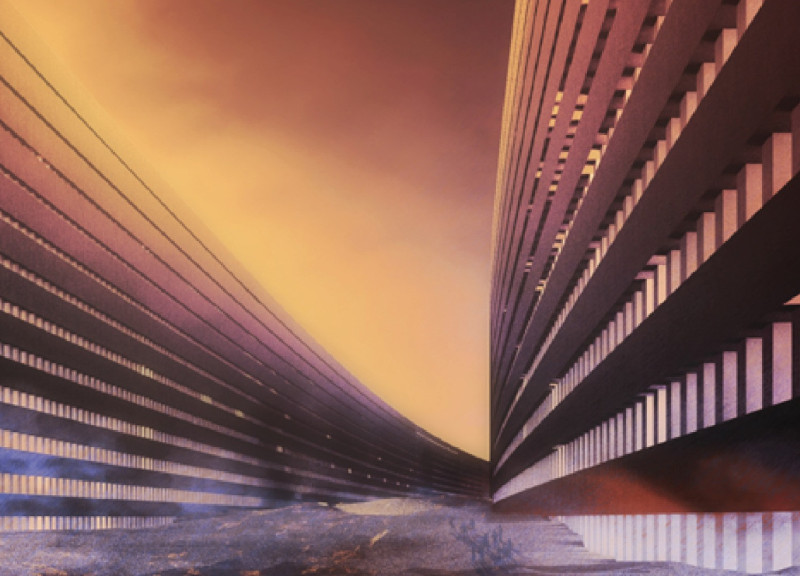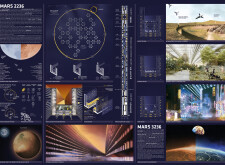5 key facts about this project
### Overview and Concept
The Mars 2236 project is an architectural initiative aimed at developing a sustainable urban habitat on Mars. Located in previously identified potential sites for colonization, this design focuses on addressing the unique challenges of the Martian environment, including atmospheric conditions, gravity, and available resources. The intent of the layout is to promote human habitation and social interaction, creating a structured urban ecosystem that supports daily activities and communal life.
### Spatial Layout and Urban Design
The layout is organized in a hexagonal grid pattern, which optimizes land utilization and ensures accessibility. This configuration enhances structural resilience in the Martian landscape, featuring interconnected nodes, quarters, and districts that facilitate diverse functions.
- **Nodes** act as central communal hubs equipped with essential services and social amenities, promoting interaction among residents and fostering community cohesion.
- **Quarters** encompass residential units in close proximity to green spaces, integrating biophilic design principles to enhance well-being through natural light and vegetation.
- **Districts** are designed to accommodate a mix of commercial and social infrastructure, maintaining a dynamic urban environment that supports a spectrum of economic and social activities.
### Materiality and Sustainability
A foundational aspect of the Mars 2236 project is the emphasis on sustainable material selection appropriate for Martian conditions.
- **Regolith-derived materials** are proposed to utilize local soil for construction, thereby mitigating the need for transporting materials from Earth.
- **Reinforced composites** are planned to provide lightweight yet durable structures, capable of withstanding environmental stresses.
- **Solar panels and green roofing** are incorporated to maximize solar energy capture and create vegetated surfaces, enhancing air quality and visual appeal.
These material strategies are integral to the project's sustainability goals, aiming to minimize the carbon footprint and promote self-sufficiency in an extraterrestrial setting.
### Design Outcomes and Unique Features
The visual representation of the Mars 2236 project includes images that illustrate interactions between residents and the Martian landscape, particularly within the quarter parks. These green spaces not only serve recreational purposes but also function as ecological filters, contributing to air and water recycling in controlled environments.
Furthermore, the design includes adaptable multi-functional spaces that can evolve to meet the changing needs of inhabitants over time. The integration of advanced technology within these spaces, such as smart infrastructure to monitor and optimize resource usage, underscores a commitment to innovative solutions in addressing the challenges of Martian living.



















































